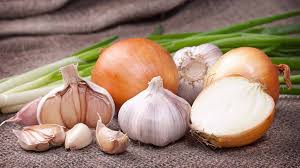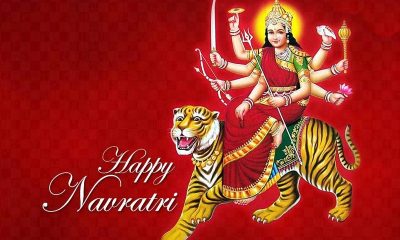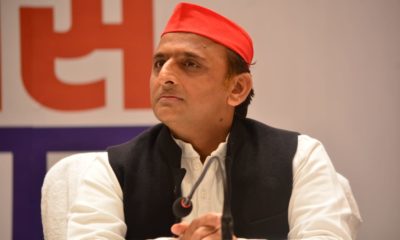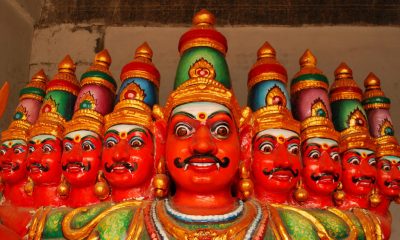Spiritual
Navratri 2018: Why You Cannot Have Onion and Garlic During Navratri
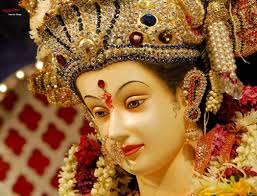
The season of festivals is here and there is a lot of excitement in the air. The first in the line-up of festivals is Navratri which began on 10 October 2018 and will go on for 9 days till 18th October 2018 . It is celebrated in the holy month of Ashwin, and is also known as Maha Navaratri. Devotees worship the nine forms of Durga also called the Nav Durga during this period with plenty of offerings and bhog and observe special fasts to seek her blessings.

It is believed that during these 9 days, Goddess Durga descends from the heavens above and takes shelter amongst her devotees to bless them with strength, power and prosperity. During the Navratri fasts, people follow a strict vegetarian diet and refrain from consuming certain foods like cereals, grains, non-vegetarian food, regular salt and alcohol. They prepare their daily meals with vrat ingredients like Singhara atta, buckwheat flour, sabudana,fresh fruits, sendha namak and samak ke chaawal. If you happen to observe these ritualistic fasts, or know someone who is keeping them, you may know of the practice of not including onions and garlic in the special Vrat ka Khana or fasting meal. In fact, people who do not observe these fasts also refrain from consuming onion, garlic, non-vegetarian food and alcohol during the nine days of Navratri
But, do you know why you are told to avoid onion and garlic even though they are categorised as vegetarian foods?

According to Hindu and ancient Ayurvedic understanding, foods can be divided into three categories, depending upon their nature and the response they trigger in the body after consumption. These three categories are as follows.
1.Raajasic food
2.Taamasic food
3.Saatvik food
The word Saatvik comes from the word, Sattva – which means the one that is pure, natural, vital, energetic, clean and conscious. Saatvik foods include most of your vrat ingredients like fresh fruits, cooling curd, pure rock salt, seasonal vegetables like pumpkin and lauki and subtle spices like cumin, coriander and black pepper. On the other hand, the words ‘Rajas’ and ‘Tamas’ refer to something that is destructive, resentful, unripe and weak.

While fasting for Navratri, people opt to go for saatvik food. Besides the religious aspect, there is a scientific reason for this too. Sharad Navratri falls around the months of October-November which usually mark the transition period from autumn to winter. During this time of seasonal change, our immunity tends to decline and therefore, it helps to switch to light saatvik food that does not burden your digestive system. It may also help in keeping away from toxins that may breed in greasy, heavy or unhealthy food, and thus, cleanses your body of all impurities.
Onion and garlic are categorized as Taamasic in nature, and have been linked to invoke carnal energies in the body. Onions are also said to produce heat in the body. Therefore, they are avoided during the Navratri fasts..
Ancient Vedic texts also regard salty, spicy, strong and pungent foods to take away one’s focus from the devotion of the Lord.
Home
Chaitra Navratri 2022 Day 2: Maa Brahmacharini Significance and History

Chaitra Navratri 2022 begins on the first day of the Hindu month (lunar-solar calendar) Chaitra. It marks the end of spring season and beginning of summer season, and that’s why it is also known as Vasant Navratri. The nine-day-long festival has already started from April 2. Tomorrow, that is April 3, is the second day of Chaitra Navratri, and Goddess Brahmacharini is worshipped on the second day of the holy festival.
Chaitra Navratri 2022 Day 2: Maa Brahmacharini Significance
Maa Brahmacharini is known for her pure and sincere devotion and determination. According to the drik panchang, Goddess Parvati took birth at the home of Daksha Prajapati. In this form, the Goddess Parvati was a great Sati and her unmarried form is worshipped as Goddess Brahmacharini. It is also believed that Lord Mangal, the provider of all fortunes, is governed by Goddess Brahmacharini. She did severe penance to get Lord Shiva as her husband and performed hard austerity. Due to this, she was called Brahmacharini. According to Hindu mythologies, Goddess Brahmacharini was on a diet of Bilva leaves for 3000 years while she prayed to Lord Shankar. Later, she even stopped eating Bilva leaves and continued her penance without any food and water.
Chaitra Navratri 2022 Day 2: Maa Brahmacharini Puja Vidhi
Step 1: The devotees should get up early and should take a bath.
Step 2: Then, the devotees should take flowers, roli, chandan, among other puja samagari and offer them to the idol of Maa Brahmacharini.
Step 3: The devotees should chant mantras and conclude the puja by performing a special Maa Durga Aarti.
The favourite flower of Maa Brahmacharini is Jasmine. The website also mentions the mantras to chant for Maa Brahmacharini.
Om Devi Brahmacharinyai Namah॥
Stuti:
Ya Devi Sarvabhuteshu Maa Brahmacharini Rupena Samsthita।
Namastasyai Namastasyai Namastasyai Namo Namah॥


